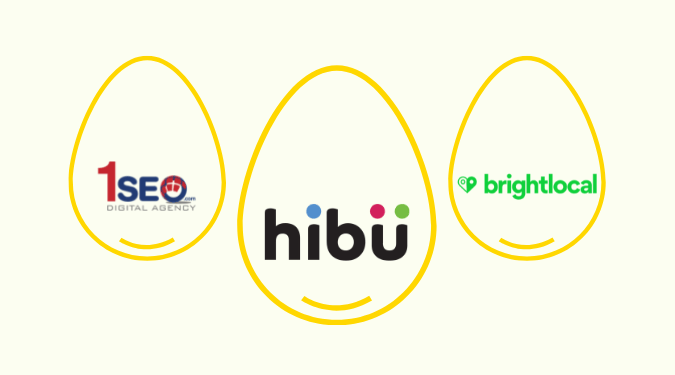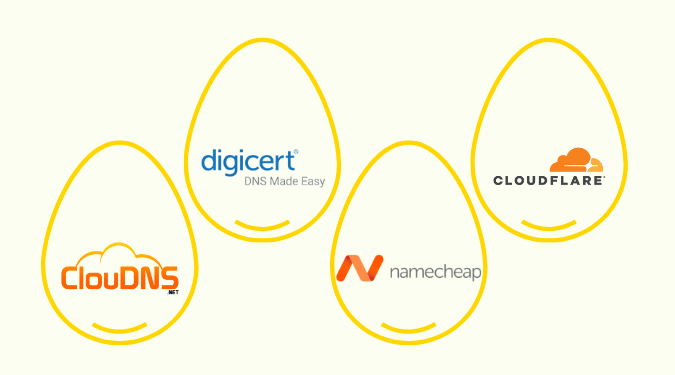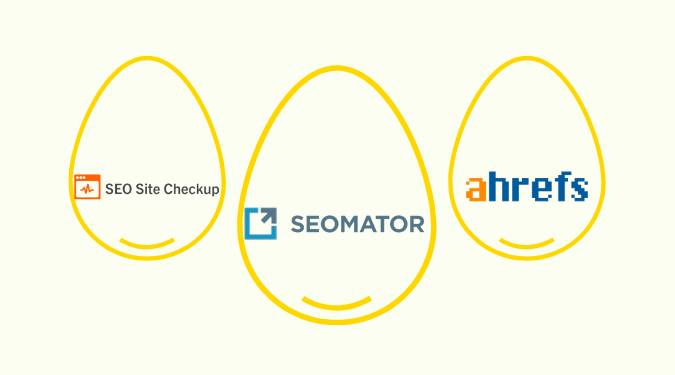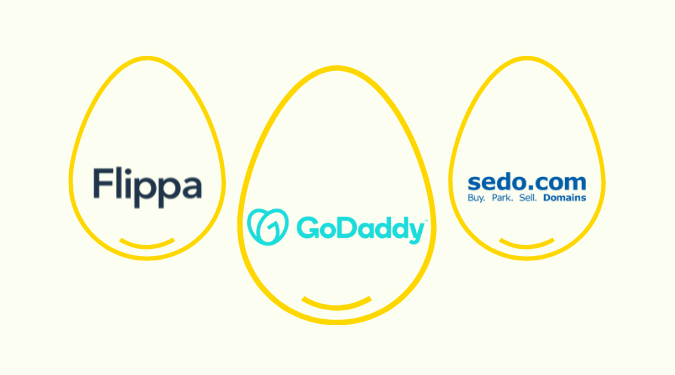Technology and Software
What Is Headline Writing All About? The Complete Guide
80% of people never read past a headline. This means you absolutely need to get your headline right to get any meaningful readership. The title you give to a piece of content, like a blog post, is a big part of showing up on search engines and social media. It’s also how you grab someone’s interest and convince them to keep reading. In this guide, we’ll break down everything you need to know to craft effective headlines for your content.
How Do Headlines Work?
Headlines are the title heading for a landing page, blog post, or article. Like how they’ve long been used in print media, this short sentence introduces a reader to the topic and scope of a piece of content, giving you a sense of what you’re about to read.
For a blog post, a good headline will share just enough information to let you know what the post is about, but not too much. You want to tease the content that comes after it, enticing someone to keep reading beyond the headline. You want to catch a reader’s attention and pique their interest or curiosity enough to have them read the rest of your blog post.
Because there’s so much content on the internet, writing engaging headlines that stand out in Google search results can be hard. Good headline writers use tricks like questions (like in the headline of this post) or emotional tactics (like tapping into FOMO or the fear of making a mistake) to stand out and get clicks.
Headlines also help potential audiences find content that’s relevant to them. A good headline can also serve as the first part of an answer to searchers’ questions, like the best email marketing software or how to start a business on a tight budget. In content marketing, this makes headlines even more important, as they’re the way to signal to searchers that your article contains useful information for them.
As much as headlines work to get searchers and readers to ingest your content, headlines are also very important for SEO. Google takes headlines into heavy consideration when it comes to search engine result rankings, and smart use of keywords in your headline can make all the difference between showing up near the top of the first page of results and being buried on page three. A headline that isn’t SEO optimized will mean that, no matter how good your post content is, there’s a risk no one will ever find it.
How Long Should My Headlines Be?
This is one of the most common questions when it comes to effective headline construction. There isn’t a hard rule on how many characters a headline should have, but most marketing experts agree it should be under 60 characters.
The reason is that anything longer than 60 characters will have a portion cut off in search results. That makes it a bad idea to craft long headlines that don’t address the content’s topic in the first few words.
Top-performing blog posts that go over 60 characters tend to use parentheses to add extra information. Though these are cut off on the search results page, you can use this as a clever way to add an extra hook to entice the reader when they arrive on your content page. Just don’t place your keywords and topic beyond that cut-off, or searchers are unlikely to click through to the content page.
That’s a more advanced headline crafting tactic, so it’s smart to try your best to keep every headline under 60 characters. A good trick here is to use symbols like ampersands and plus signs to shorten length while saying the same things as “and” and “more than.” You can try playing around with parentheticals in your titles if you’re not getting the clicks or time on the page you hoped.
What Makes a Good Headline?
Headlines that entice and convert use a few common tricks.
A tried-and-true technique is using figures and numbers in your headline. They give your post a sense of tangibility. For example, people tend to like numbered lists because they’re easy to scan. Or, putting the current year in your headline helps readers trust that you’re providing relevant, up-to-date information.

Interestingly enough, odd numbers in a headline can improve click-through rates by 20%. So, when you’re writing up a list for your blog, consider adding or subtracting an item to hit an odd number and see if that trick works for you, as well.
Another easy way to make your headlines better is to tell people immediately what benefit they’ll get from clicking on your post.
People want to know what your content can do for them. To get more conversions and more clicks, make sure people know what they’ll learn, gain, avoid, or master by reading your post before they even click on the search result.

Having a benefit stated in the headline gives your readers an incentive to dive into your content, so try to make it as clear as possible in your headline without bloating it to over 60 characters.
In addition to those two tactics, another important way to approach headlines is to be specific. This requires you to know your audience well enough to understand what specifics will resonate with the readers you’re trying to reach.
If you are covering a popular topic, you’ll have to deal with a lot of competition. By getting specific, you can stand out from other headlines and get seen by your target audience.

The search term “pasta recipes” on its own will be extremely competitive, and just writing a headline like “19 Pasta Recipes To Try” doesn’t really grab anyone’s attention.
However, a headline like “13 Quick & Easy Pasta Recipes” will appeal to more busy people who still want to cook for themselves or people who don’t have a ton of confidence in their cooking skills. Anyone who has worried about making a good dinner after getting home after 6 p.m. or has screwed up making scrambled eggs will find this headline more relevant and appealing than the generic, broad version.
Keywords and knowledge of your target audience are an important part of SEO in general, not just headlines. Even if you are a smaller or newer site, you can still rank for keywords and get your headlines on page one of Google by going after less competitive keywords or using long-tail keywords. The key is to find your niche, learn what excites and intrigues the audience interested in that niche, and use that knowledge to inform both the content you create and the headlines you give that content.
What Are Some Headline Mistakes to Avoid?
Now that we’ve seen what a good headline looks like, let’s break down what you need to avoid. There are some tactics that, at first glance, you might think would boost conversions that could actually end up hurting.
Keyword stuffing, or keyword bombing, is when you put too many keywords or repeat a keyword too often in an attempt to boost your SEO. Google will recognize this and penalize your content page accordingly, causing your blog post or article to never even show up in search results.
Using our pasta recipe headline example, keyword stuffing might look like this: “Pasta Recipes for Pasta Lovers: Quick, Easy Pasta Recipes.” It doesn’t sound like plain English and is riddled with repetition and unnatural fragments. Google can tell you’re trying to game the system and be the first result for pasta recipe searches.
Using plain English is important in general. Avoid using too many big or confusing words in your headlines. Your headline should be easy for anyone to understand and clear.
Opt for simpler language over $5 words you’ve plucked out of a thesaurus. Instead of “13 Effortless & Delectable Pasta Recipes”, keep it simple and straightforward: “13 Easy & Tasty Pasta Recipes.” You’ll appeal to a bigger audience and, as a result, hopefully, earn more views and conversions.
Then, there’s clickbait, which is the tactic of optimizing your headline for keywords and search, but the content that follows it is unrelated to the topic of the headline. Even if it works to get a visitor from search results to your content page, you’ll only get that one click and then lose that reader forever when they realize they’ve been misled.
Not only will this annoy your audience and damage your site reputation, but you’ll also potentially get in trouble with Google (which checks for content relevance). It won’t just ding you for that content page but also your root domain, meaning that even if you do post other useful articles, Google and the readers who have been tricked before by one of your clickbait headlines won’t trust you at all. If you say there is value to your blog post in the headline, follow up on that promise.
What Are Some Popular Headline Formulas?
Writing good headlines comes with practice, but there are a few formulas that have been proven to work. Since you’re constrained by character count and required elements (like your keywords), there isn’t a lot of room for variation from tested headline-crafting techniques.
These formulas use marketing psychology to help you create headlines that make people so curious that they can’t help but click through to your blog post. Let’s look at a few of the tried-and-true headline formulas you can use today.
[Odd Number] Easy Ways To [Do Something Your Audience Wants]
This is the classic list post. The content and benefit of the post are clearly spelled out to your readers from the start. If they read this post, they’ll learn a few different means of accomplishing something they’re interested in doing.
These headlines use a combination of numbers, appealing language (e.g., “easy”), a statement of benefit, and audience knowledge to appeal to readers and searchers.

Remember, odd numbers tend to convert better, and you want to keep this under 60 characters if you can. If the statement of benefit you want to include in the title is on the longer side, you may want to avoid inserting an appealing adjective like “easy” in order to keep the entire keyword related to the benefit intact.
Do You Really Need [Popular Or Controversial Thing In Your Niche]?
These types of headlines use questions and counterintuitive knowledge to trigger curiosity and engagement. You can play around with different types of questions and approaches, but the goal is to grab the reader’s attention by using something they may think is common knowledge or best practice and implying in the headline that it isn’t the whole story or what it’s cracked up to be.

Perceived misconceptions are a powerful device in headlines for online content, even if you don’t actually disprove them. A headline that goes after popular or controversial concepts in this way will appeal both to the people who worry that the popular wisdom they follow is wrong and those who have always suspected it wasn’t totally correct.
How To [Fix Problem] In [Odd Number] Steps
Instructional posts are highly valuable to searchers, especially when they promise an easy-to-follow, step-by-step guide on how to do something.
Much like a list post, these headlines use numbers and give people very clear statements of benefits. They also tend to highlight a problem that people in your niche commonly face, which is attention-grabbing and helps you relate and appeal to your target audience.

Keep in mind that, as opposed to a list, you want to use a small number of steps. “33 Examples of Good Headlines” is appealing to searchers looking for a lot of options, but “How to Write a Good Headline in 33 Steps” is daunting and overcomplicated.
The Ultimate Guide to [Specific Topic of Interest To Your Audience]
Delivering the ultimate guide to a subject your audience is innately interested in or confused by is a great way to use long-tail keywords in the headline and provide value in the content by breaking down a complex topic.
These headlines work best when you get specific and choose trending topics or proven stumbling blocks to your audience’s goals.

Remember that specificity is your friend here. Broad topics for an ultimate guide are going to be competitive on Google and may not reach your intended audience as effectively as more specific subject matter. For example, “The Ultimate Guide to Making Pasta from Scratch” is likely going to be more effective than a generalized “Ultimate Guide to Pasta.”
The [Odd Number] Most Common Mistakes [Audience] Should Avoid
These headlines are focused on pain points common to your target audience and appeal to their hope to get things right the first time. Highlight a problem or spotlight pitfalls for your prospects, then show them how to avoid them.

If you use these headlines, make sure that you give good solutions in your post. You don’t want to create fear in your audience if you can’t provide them with a solution!
What Tools Can Help Me Write Better Headlines?
With all of the information above in mind, it can still be hard to find the right inspiration for crafting effective headlines every time. Therefore, we’ve found three tools to help you put the guidance above into practice. They’ll assist with staying under the character limit, adhering to proving formulas, and properly using effective verbs and adjectives to make your headlines more attention-grabbing.
The Monster Insights Headline Analyzer Tool is free to use. It analyzes any headlines you plug into it and then will tell you what’s good about it and what you can do to improve it. The tool will display an overall score for your headline, word suggestions, a preview of how your headline will look in Google, and more useful guidance.
Another free tool is the Sharethrough Headline Analyzer. This largely does the same things as the previous tool, but it gets a little more granular with suggestions. Some of its advice isn’t always useful (like name-dropping a celebrity in your headline, which tends to be bordering on clickbait), but most of its suggestions are helpful for remembering the basics (like including your brand name) and trying out different approaches (like using “alert” words).

Last, one of the biggest names in inbound marketing offers a free idea-generation tool. HubSpot’s Blog Ideas Generator lets you add keywords and then uses them to generate an array of blog post ideas and headlines for you.
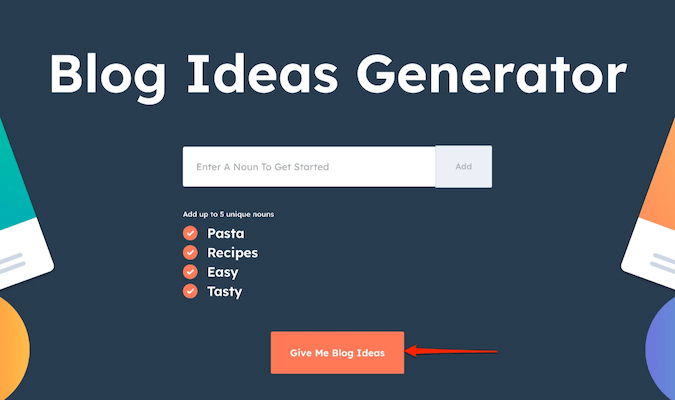
You can get five ideas generated for free on the tool’s web page, or you can get a list of 250 headline ideas delivered to you by adding your email address.



